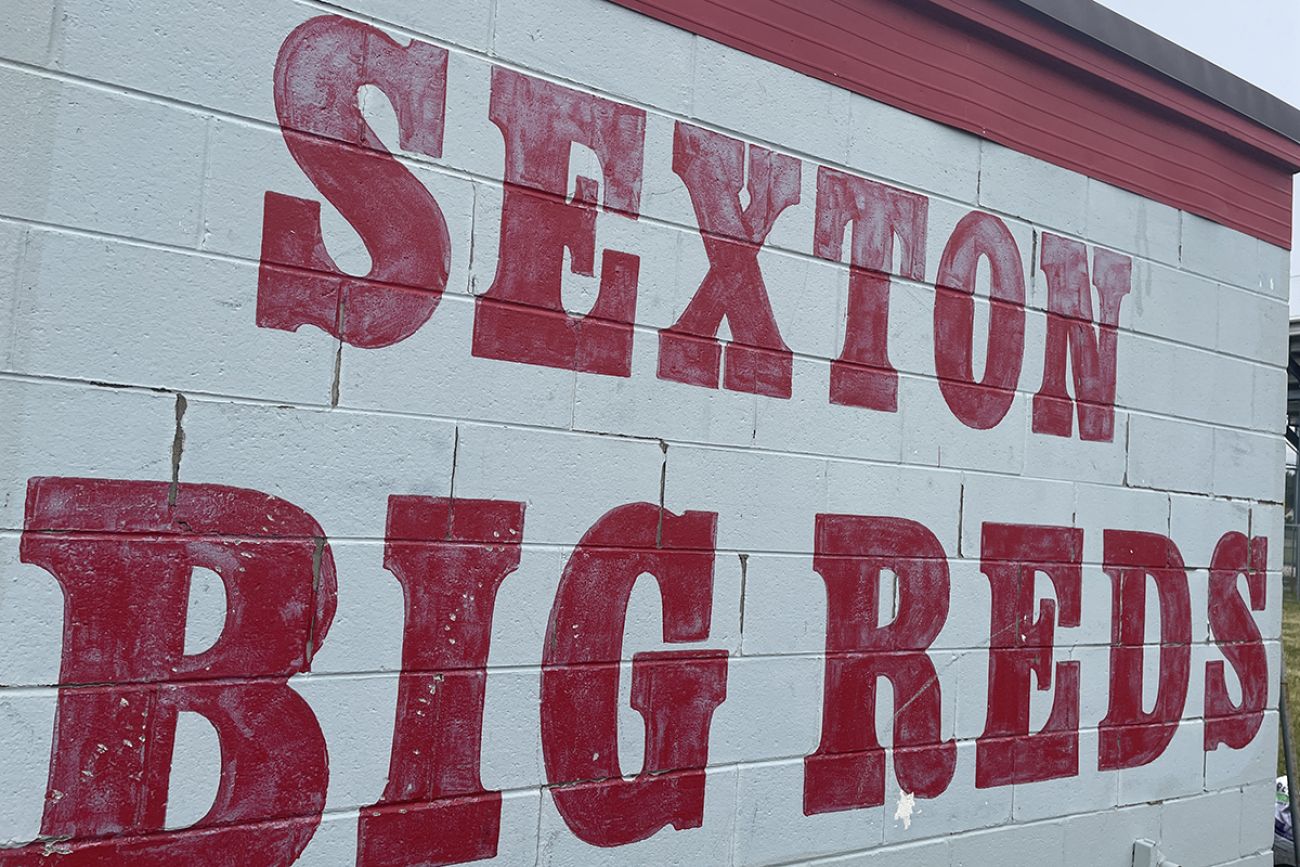Michigan schools ditching Native American nicknames, with casino fund aid

The sports teams of Saranac Community Schools, near Grand Rapids, have been known as the Redskins since the school adopted the nickname in the 1930s.
But starting in August, Saranac will be replacing all of its teams’ uniforms, old signs around the school and releasing new school apparel with an updated logo — the Red Hawks.
The district voted in October to retire the Redskin nickname. As of this summer, there is only one Michigan school district that continues to use that nickname, which is considered a slur among Native Americans. According to a 2020 list of Michigan school nicknames compiled by the MHSAA, Camden-Frontier is the last school left using Redskin as a nickname, and the Hillsdale County district is considering whether to drop the name.
Related:
- Michigan schools are offering new teachers up to $10k bonus. Is yours?
- A supergroup was to reform Michigan schools, then the schools dropped out
- Michigan boosts K-12 special education, teacher hiring, mental health funds
More and more Michigan school districts are moving away from Native American-based nicknames and mascots, a trend that is also happening nationally.
In Michigan, Saranac is among districts that are receiving financial help in those transitions from tribal casino funds.
The Native American Heritage Fund, announced in June that it would distribute grants totalling over $400,000 to four school districts; Saranac, Lansing, Hartford and Chippewa Hills. The money is being given to “support community projects, academic programming updates, mascot changeovers and other projects that honor Native American culture and history” according to the Heritage Fund press release.
Chippewa Hills will receive $52,371.20 to rebrand its logo from an arrowhead to a knight's head and keep its Warrior nickname. Lansing will receive $87,500 to change the mascot, logo and nickname for Sexton High School, which was previously known as the Big Reds. Hartford will receive $132,249.25 to rebrand from Indians to Huskies as well as implement more lessons about Native American culture in the curriculum. Saranac will receive $139,318.90 to rebrand from the Redskins to Red Hawks.
The money will be distributed to the schools in August.
“If we fund the decommissioning of racist mascot imagery now, we will have more money in the future for proactive program and curriculum programming,” NAHF Chairperson and Tribal Council Chairperson for the Nottawaseppi Huron Band of the Potawatomi Jamie Stuck said in a statement.
The use of Native Americans as mascots or nicknames has been a contentious debate in professional American sports as teams like the Washington Redskins were ordered by a U.S. district court to change its name and logo because it was “a disparaging trademark”. The Cleveland Indians followed suit and changed its name to the Guardians in 2021 while other teams like the NFL’s Kansas City Chiefs and baseball’s Atlanta Braves have chosen to keep their names and logos.
Since the court order handed down to the Redskins in 2015, there has been a steady push nationally and in Michigan to phase out Native Americans as logos or mascots. There were over 2,000 schools or professional sports teams using a Native American mascot in 2013, according to the National Congress of American Indians; that number fell to a little over 1,200 in 2020, according to fivethirtyeight.com.
Chippewa Hills superintendent Bob Grover told Bridge Michigan the district’s school board went to the council of the nearby Saginaw Chippewa tribe to get their opinion on the district’s arrowhead logo in 2018. The district expected the tribe to be fine with it since it was an improvement from its old Indian head logo, but the tribe leaders told them it was still a misrepresentation of their heritage.
The conversations with the tribe sparked the idea for the new logo, a knight’s head, and helped the district connect with the Heritage Fund to apply for the grant to fund the change.
Chippewa Hills will start with painting over an old Indian head painted on the gym wall in the high school and replace sports uniforms which had an arrowhead on the sleeves.
Not all teams will have new uniforms right away, Grover said; some changes will have to wait for additional grant money in the future or “natural attrition” of being replaced over time.
There are still dozens of school districts in the state of Michigan that use Native American nicknames and logos.
Clinton Township Chippewa Valley, Milan, Muskegon, Marquette and Port Huron are the five schools that still use Big Reds or Redmen as their nickname.
Utica, Dowagiac, Capac, Cheboygan, Canton, New Boston Huron and White Pigeon are the seven school districts that go by Chiefs or Chieftains. Five schools, Tecumseh, Chesaning, Newberry, Tekonsha and White Cloud, go by Indians. Two schools, Gladstone and Tawas, are nicknamed the Braves and 16 districts are called the Warriors.
A 2010 study conducted by University of Michigan psychology professor Stephanie Fryberg found that Native American mascots reinforce negative stereotypes about Native American culture and remind Native Americans how others depict them and their culture negatively.
Jay Sam, the director of Historic Preservation for the Little River Band of Ottawa Indians in northern Michigan, said the use of Native American mascots and nicknames freezes Native American culture 300 years in the past and does nothing to honor what the culture looks like today. He likened fans showing up in “war paint” or headdresses to sporting events to people wearing blackface to degrade African Americans.
“If you close your eyes and think American Indian or Native American, What's the first thing you see?” Sam told Bridge Michigan. “Generally, it's the guy in the movies with the buckskin and the feathers — it's not the manager of the business the tribe owns or the tribal court judges in their role.”
The NAHF is a fund that was set up by the Michigan government and the Nottawaseppi Huron Band of Potawatomi as a part of its tribal-state gaming contract in 2016. The fund is allocated $500,000 annually from the state’s casino-revenue sharing system in an effort to form positive relationships between Michigan’s tribes and local school districts, universities and local governments.
The NAHF started distributing grants in 2018 and has funded 12 Michigan school districts to change their mascot and nickname, including the four schools this year. Other school districts that rebranded with NAHF funds are Okemos, Saugatuck, Petosky, Clinton, Paw Paw, Godfrey-Lee and Belding, as well as Riddle elementary school in Lansing.
Other schools in Michigan are taking things into their own hands despite not getting a grant from the NAHF. The school board for Sandusky school district in Salinac county voted in April to stop using Redskin as the school nickname and mascot without grant funding.
The transitions often face criticism from some community residents. In Saranac, Superintendent Jason Smith told Bridge Michigan that the district received “negative input” in surveys from community members who wanted to keep the Redskin name. Smith said the feedback was expected, but the change to Red Hawks, which was announced in June, has been welcomed by the community so far.
“We wanted people to express both sides of the issue of the transition and try to find some middle ground,” Smith said, “Keeping the school colors was one of the first things that came out. They said we don't like this, we don't think we should do this, but if we're going to do it, we would like to see this.”
Smith said it’s important to give communities the time and space to talk about the change. In his district, the decision came following a two-year process of the school district consulting with local tribal leaders, students and community members.
“When we first started revisiting this again shortly after the Washington football team had announced that they were going to change, one message was very clear in talking to other school districts as well as tribal leaders — take your time,” Smith said. “Here, we thought we're better off making sure that we take our time and get as much input as we could.”
In Chippewa Hills, Grover, the superintendent, said the district knew “it was the right thing to do” after their conversations with tribal leaders.
“People that didn't like the change say our intent was to honor the Native American people who are here by naming it after them and using their image,” Grover said. “And the tribe's remark was, your intent was not our perception — we don't perceive that as flattering.”
There was a little pushback from the community but board members reiterated that it was the right thing to do, Grover said, and pushed forward with the change.
“They said we know it's socially the right thing to do so we're going to make the change,” Grover said. “Now what the change is, that's when we're going to involve the community and we formed a committee that was made up of students, staff, parents and community members.”
Michigan Education Watch
Michigan Education Watch is made possible by generous financial support from:
Subscribe to Michigan Education Watch
See what new members are saying about why they donated to Bridge Michigan:
- “In order for this information to be accurate and unbiased it must be underwritten by its readers, not by special interests.” - Larry S.
- “Not many other media sources report on the topics Bridge does.” - Susan B.
- “Your journalism is outstanding and rare these days.” - Mark S.
If you want to ensure the future of nonpartisan, nonprofit Michigan journalism, please become a member today. You, too, will be asked why you donated and maybe we'll feature your quote next time!






